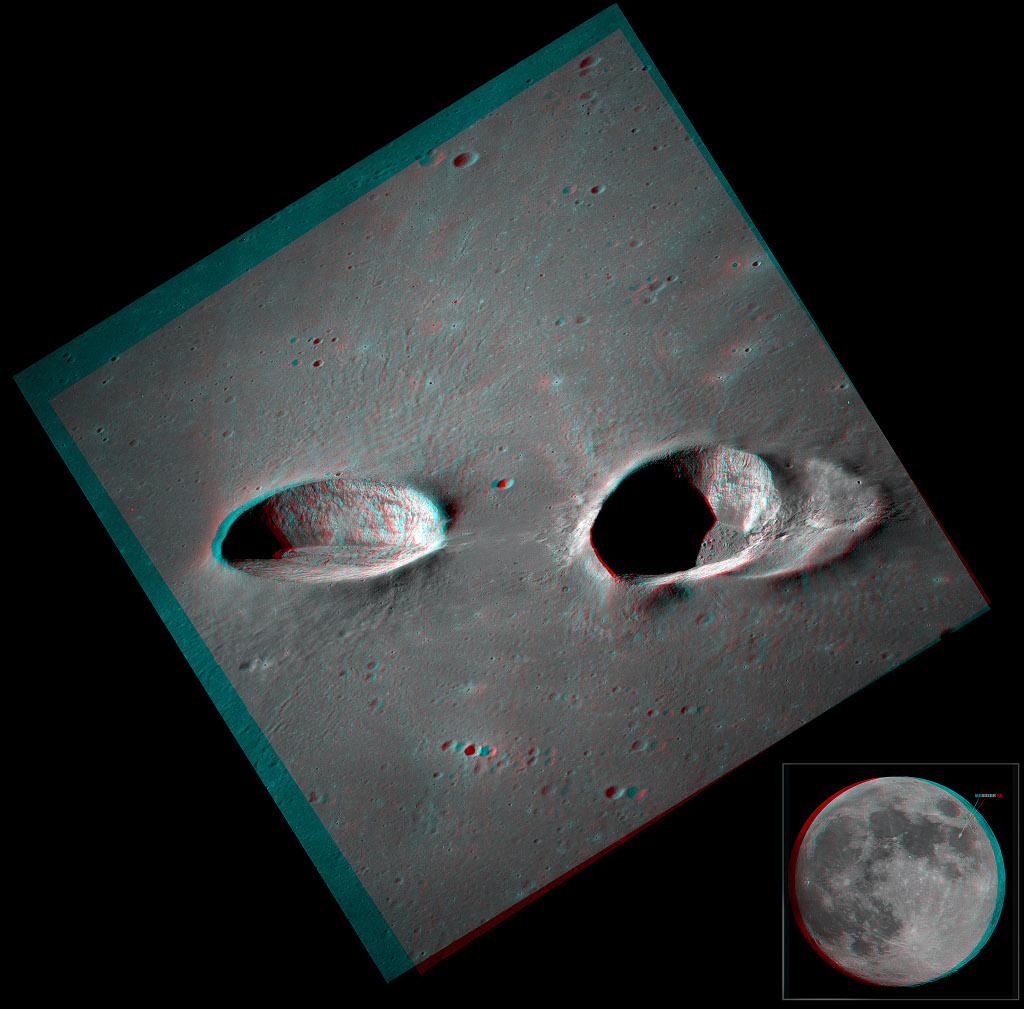2020年12月11日
Messier Craters in Stereo
Image Credit: Apollo 11, NASA; Stereo Image Copyright Patrick Vantuyne
Explanation: Many bright nebulae and star clusters in planet Earth’s sky are associated with the name of astronomer Charles Messier from his famous 18th century catalog. His name is also given to these two large and remarkable craters on the Moon. Standouts in the dark, smooth lunar Sea of Fertility or Mare Fecunditatis, Messier (left) and Messier A have dimensions of 15 by 8 and 16 by 11 kilometers respectively. Their elongated shapes are explained by the extremely shallow-angle trajectory followed by an impactor, moving left to right, that gouged out the craters. The shallow impact also resulted in two bright rays of material extending along the surface to the right, beyond the picture. Intended to be viewed with red/blue glasses (red for the left eye), this striking stereo picture of the crater pair was recently created from high resolution scans of two images (AS11-42-6304, AS11-42-6305) taken during the Apollo 11 mission to the Moon.
Tomorrow’s picture: wandering toward a Great Conjunction
梅西耶陨石坑的立体影像
影像提供: Apollo 11, NASA; 立体影像版权 Patrick Vantuyne
说明: 在地球天空中,有许多亮星云和星团和天文学家梅西耶有关联,因为它们是梅西耶18世纪著名星表收录的天体。除此之外,月面的这二个引人注目的大撞击坑,也是以他为名。这二个位在黝黑平滑丰富海内的撞击坑,分别是左侧长15公里宽8公里的梅西耶A,以及右侧长16公里宽11公里的梅西耶B。它们颀长的形状,感认是一颗撞击物以极小角度,从左向右飞掠时所刨出的。这个小角度撞击事件,同时也产生2道向右伸展,直到影像右缘之外的明亮物质喷溅纹。这幅需要用左红/右蓝眼镜观赏,呈现这对撞击坑的精采立体影像,是重新高解析扫描阿波罗11号探月任务拍摄的二张照片(AS11-42-6304、AS11-42- 6305)后,在不久之前制作的。



